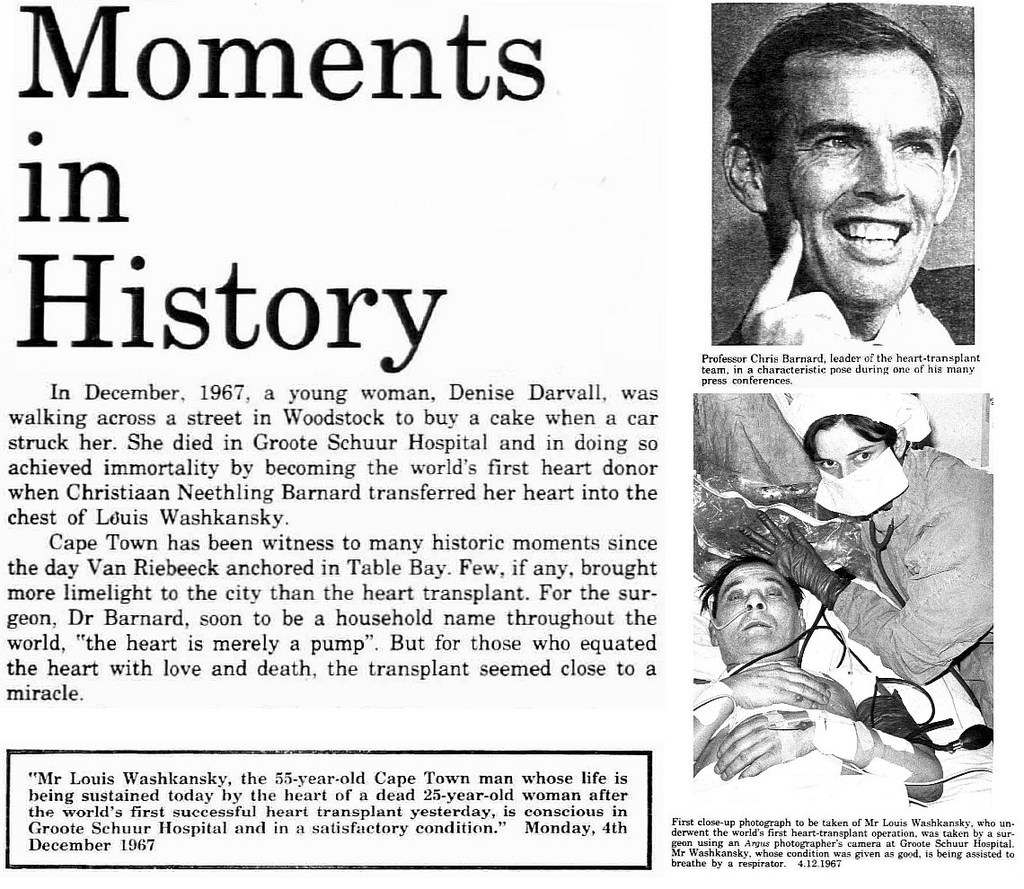
Lekcja #40 Pierwszy przeszczep serca (1967)

Jaki jest najtrudniejszy problem etyczny, jaki stwarza przeszczep serca?
Dylemat etyczny obraca się wokół pytania, czy dawcy rzeczywiście są martwi, gdy zostaną uznani za zmarłych na podstawie kryteriów śmierci sercowo-naczyniowej w celu pobrania narządów. W obecnej epoce z powodu chorób zakaźnych istotne stało się poszerzenie puli narządów dostępnych do przeszczepu, ale sposoby, aby to zrobić, stwarzają wiele dylematów etycznych. Argument deontologiczny sugeruje, że środki do celu powinny być zgodne z powiązaną z nimi moralnością. Prawa i normy przeciwko zabójstwom zabraniają zabójstw dokonywanych w jakimkolwiek celu, w tym zabójstw dokonywanych w celu uzyskania narządów w celu ratowania życia innych. Te prawa i normy mają zastosowanie nawet wtedy, gdy dana osoba jest nieprzytomna, bardzo osłabiona lub bardzo bliska śmierci. Dawcy narządów muszą umrzeć przed pobraniem narządów, a samo pobranie narządów nie powinno prowadzić do śmierć dawcy. Natomiast utylitaryzm koncentruje się na wadze celów (nie dbając o środki).
How do they keep a donor heart alive?
Do you have to be alive to be an organ donor?
Do you have to be alive to be an organ donor?
While some organs, such as a single kidney, can be donated while the donor is alive, most organ donations occur after the donor has died. The medical profession considers people whose brains have irreversibly ceased to function to be dead.
Can you give someone your heart if you are alive?
Why does the body reject transplants?
How did David Rockefeller get 7 heart transplants at the age of 101?
What are the moral problems posed by organ transplants?
Ukraine tops Europe in organ trafficking
The case of the missing children
It’s hard to look at the tiny corpses unearthed from the graveyard near Hospital No. 6. Forensic photographs show bodies apparently mutilated before they were dumped into a mass grave in Kharkiv, a city in eastern Ukraine.
In one photo, a man wearing surgical gloves holds several pieces of flesh, arranging the fragments to resemble what might have been an infant before it was dismembered.
Hospital officials say these gruesome images reveal nothing except the biological waste from dozens of routine abortions. But relatives of women who gave birth at Hospital No. 6 say they are part of growing evidence suggesting something sinister: newborns taken from their mothers, disappearing in a region known for trafficking in harvested organs and human tissue.
Events that changed the world : First heart transplant,
Cape town, South Africa, December 3, 1967
Barnard was a surgeon from Beaufort West, South Africa, who had travelled to the USA as a 31-year-old postgraduate in 1956, specializing in cardiac surgery. He returned to South Africa two years later, to the
Groote Schuur Hospital teaching facility where he began his career with a residency, assembling its first cardiac team.He prepared for the milestone procedure by performing South Africa’s first kidney transplant, in October 1967. He was already seen as one of the country’s top surgeons, and with several completed heart transplants on animals the next step was clear.
The patient was chosen; Louis Washkansky had incurable heart disease and, at 54, was still relatively young. With the end in sight, he had no hesitation in agreeing to the operation. His donor had to come through tragic circumstance, in the form of Denise Darvall, a young woman killed in a road accident.
Barnard’s 30-strong team, including his brother Marius, took five hours to complete the transplant from Darvall to Washkansky, but at its conclusion the heart was beating with no mechanical assistance.
Tragedy struck just 18 days later, however, as Washkansky died from severe pneumonia; his fragile immune system could not resist the infection so soon after the procedure.
Despite this, the transplant was considered a huge success, as Washkansky’s new heart continued to beat unaided right up until his death. Further attempts were longerlasting, with one patient, Dirk van Zyl, living on for 23 years after his 1971 operation, to the age of 68.
Since the first surgery, thousands of people have undergone successful heart transplants, though a lack of donors has kept the number from rising faster. British surgeon Sir Terrence English performed the world’s first heart and lung transplant in 1984.
Zadanie 1. Przeczytaj tekst po lewej.
Wypisz słowa, których nie znasz i sprawdź w słowniku ang-ang.
Zadanie 2. Czy znasz słowa, które są podkreślone w tekście po lewej?
Spróbuj zgadnąć ich znaczenie.
Zadanie 3. Uzupełnij definicje słowami, które są wyróżnione (pogrubiona czcionka, lub/i są podkreślone).
- _____________ a place, amenity, or piece of equipment provided for a particular purpose.
- _____________ the branch of medical practice that treats injuries, diseases, and deformities by the physical removal, repair, or readjustment of organs and tissues, often involving cutting into the body.
- _____________ relating to the heart.
- _____________ lung inflammation caused by bacterial or viral infection, in which the air sacs fill with pus and may become solid. Inflammation may affect both lungs or only one.
- _____________resistant to a particular infection or toxin owing to the presence of specific antibodies or sensitized white blood cells.
- _____________ (of a sick person or a disease) not able to be cured.
It is infinitely better to transplant a heart than to bury it to be devoured by worms.
